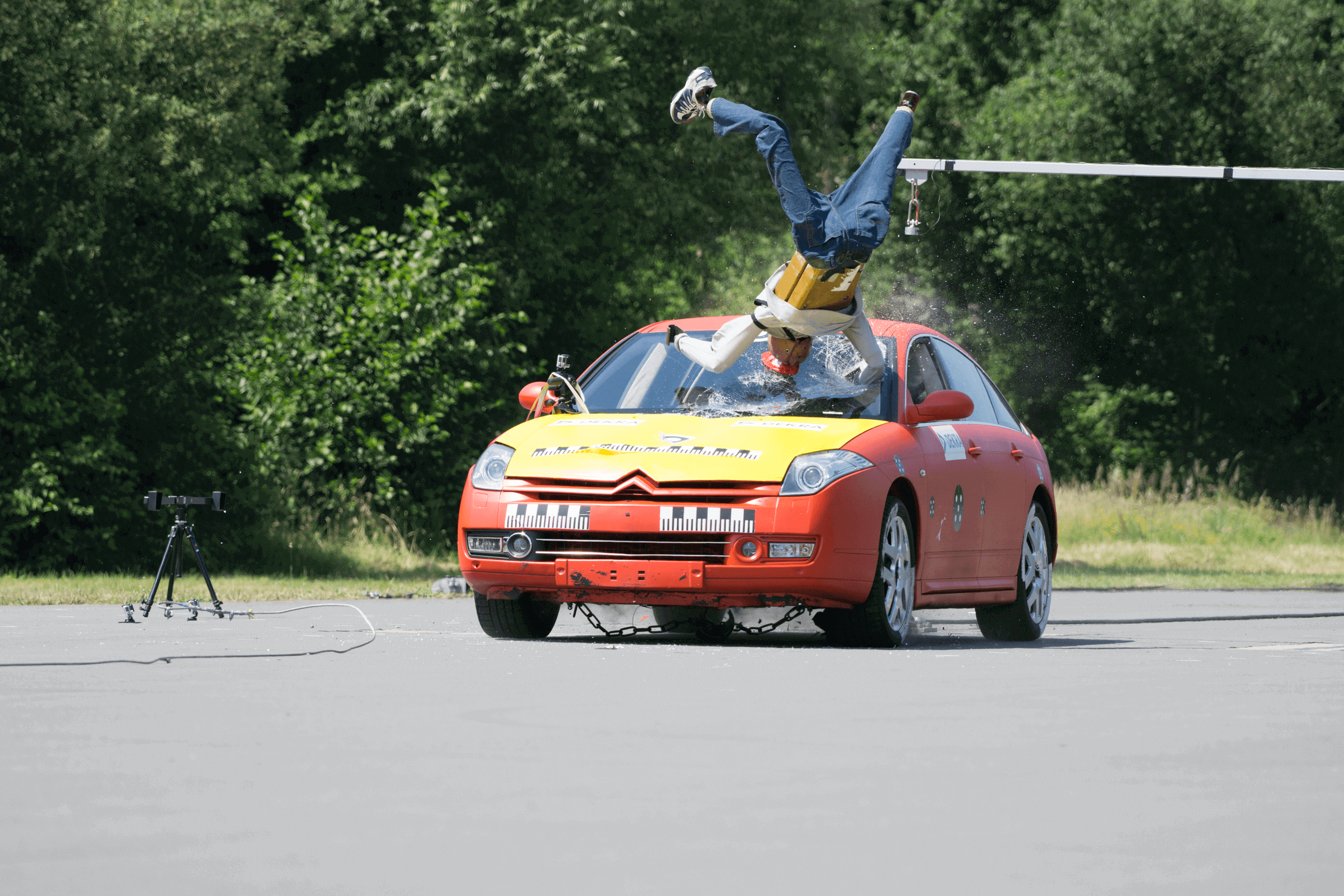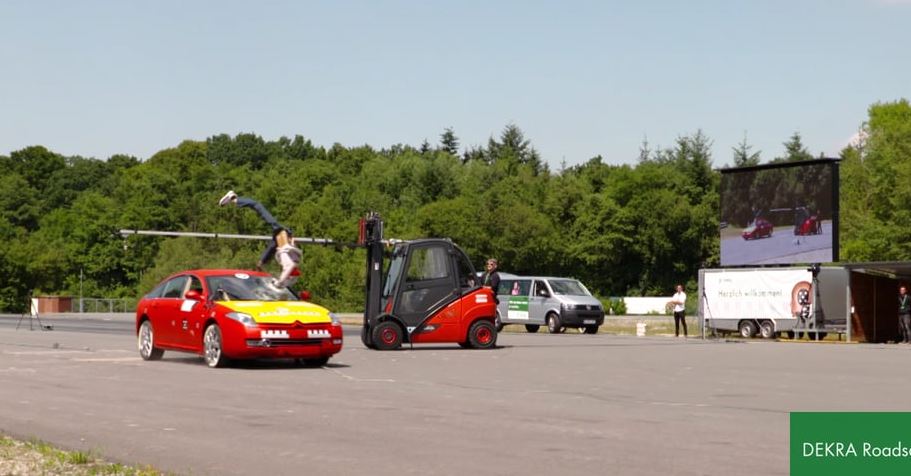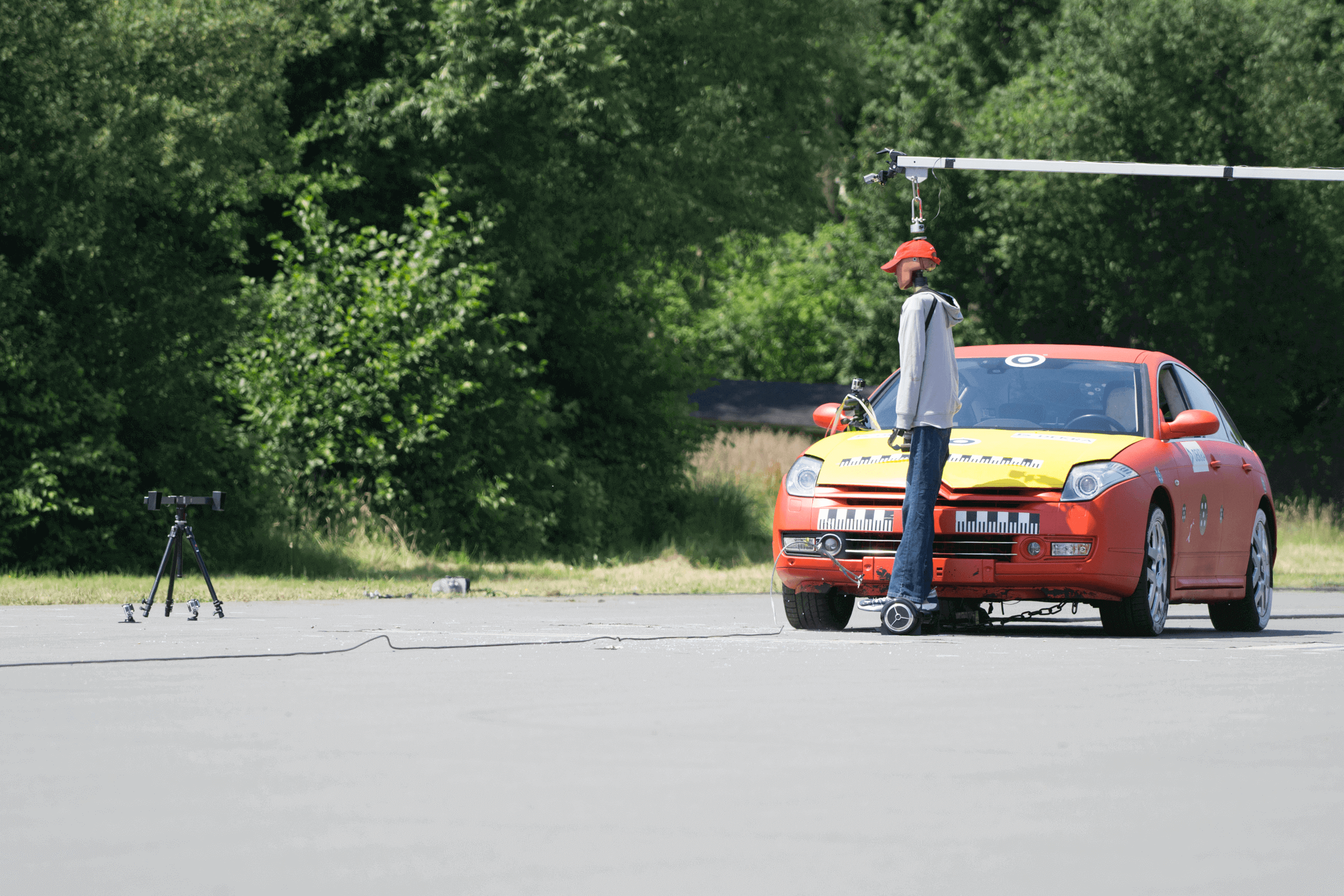Hoverboard Riders Are Faster Than Pedestrians but Equally Unprotected
In 1980s Hollywood, what are known as hoverboards were still a thing of the distant future: Michael J. Fox whizzed around on one in the classic movie “Back to the Future.” Today, the eponymous self-balancing single-axle electric boards work in real life – even if they do not actually hover – and are popular with children and adolescents in particular. In contrast to Segways, which have been around for a while now, the boards do not have a handlebar. The two electric motors are controlled only by the riders shifting the weight in their feet. Unlike in Hollywood, however, the risks that hoverboards involve are now very real. The DEKRA experts brought attention to this fact at the DEKRA Safety Day 2017 in Bielefeld.
The crash test performed at the Road Safety Center in Bielefeld involved a car colliding with a dummy on a hoverboard at a speed of roughly 40 km/h; the dummy was thrown to the ground. If this had been a real accident, the person on the hoverboard would have sustained serious injuries. “Just like pedestrians, hoverboard riders are unprotected in road traffic and are exposed to great risks in the event of a collision, for example with a car,” explains DEKRA accident researcher Markus Egelhaaf. “However, hoverboards reach speeds of up to 20 km/h, making them much faster then pedestrians. Drivers usually do not expect hoverboards to be that fast, so critical situations are inevitable.” Collisions between hoverboard riders and pedestrians can also have painful consequences.
And the legal situation is equally problematic. Because hoverboards are motor-operated and reach a top speed of more than 6 km/h, they must be classified as motor vehicles. Operating such vehicles in public spaces requires a corresponding permit. For this, however, they do not meet critical requirements, such as brakes and lights. “Ultimately, this means that hoverboards can be used only on private property,” says DEKRA legal expert Dr. Carsten Liewald. “Not to mention the fact that you would essentially need a driver’s license to ride them.” Riding a hoverboard in public spaces, for example on the sidewalk, can have legal consequences in critical situations.


